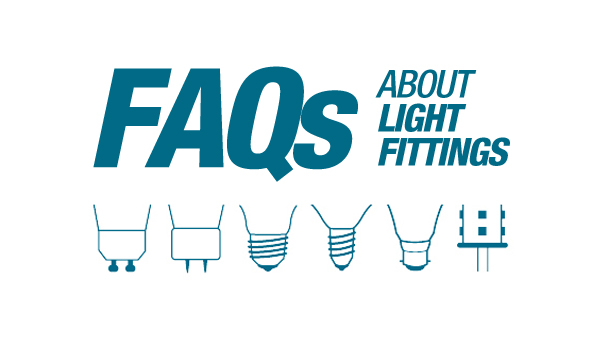A Guide To Light Fittings
Posted by Amit Soni on 6th Jul 2012

One of the really great things about LEDs is that they work in all your existing fittings – saving you the hassle of having to change them.
You might find it a little confusing though with so many fittings to choose from – that’s why we’ve prepared this handy guide for all our customers to use.
What Is A Fitting?
Let’s get the basics right before going into any details. Pick up any light bulb and it is comprised of 2 parts – the bulb itself, and the mount which is attached to the bottom of the bulb.
The mount, together with the socket into which it will fit makes up what we call the fitting.
The fitting serves 2 main purposes – firstly that it connects the bulb to the power, and secondly, it ensures safe and convenient replacement.
There are loads of different types of fittings, each one is identified by a unique code, comprised of a series of numbers and letters. Let’s take a look at some of them now.
Bayonet Mount (B22)
The bayonet mount is one of the most popular domestic fittings in the UK, as well as countries that used to be part of the British Empire, such as Australia, India and Pakistan.
It was invented towards the end of the 19th century, and was originally intended for use by soldiers who needed to quickly mount bayonets to the end of their rifles – explaining how the fitting got its name.
Bayonet fitting codes consist of the letter “B” followed by a number. This number refers to the diameter, in mm, of the base. An example of this is the B22 – a bayonet fitting measuring 22mm in diameter.
The actual fitting itself consists of a spring, and 2 contacts with bayonets on either side. They fit into place with a push and twist action.
Edison Screw (E27, E14)
Bulbs that use the Edison fitting can be identified by their code, which always has the prefix “E” or “ES” – standing for Edison screw. Again, the number following the letter indicates the diameter of the fitting in mm.
So, an E27 fitting will be an Edison screw that is 27mm across.
It was invented, as the name suggests, by Thomas Edison in 1909 and trademarked under the Mazda name – the same brand that we now associate with as the Japanese car manufacturer.
It’s a mains voltage bulb and uses a threaded metal base and corresponding socket, in which the metal screw and base both act as contacts. The mount is inserted into its socket by turning clockwise, and removed by turning it in the opposite direction.
Bi-Pin/Two-Pin
Bi-pin, or two-pin connectors, were invented by Reginald Fessenden for the 1893 World’s Fair in Chicago. The fitting code consists of the letters “G” or “GU” followed by a number – this time referring to the space between the 2 pins in mm.
MR16/GU5.3
MR stands for multifaceted reflector, referring to the reflective mirrored surfaces which give the bulb its narrow beam angle. All MR16 lamps operate at low voltage and therefore require a transformer.
This particular fitting consists of 2 pins that insert straight into the socket, without the need to turn or twist.
GU10
The GU10 was developed by Havels-Sylvania in 1996, and is a more recent version of the MR16. It is designed to run at mains voltage, and thereby eliminating the need for a transformer.
It does this by simply incorporating a transformer inside the unit itself.
It fits using a bi-pin twist lock fitting – differing from the MR16, which only needs a push.
For more details check out this video that aims to explain more about GU10 fittings:
G9 And G4
G9 and G4 bulbs operate at 12V and are mostly used in household appliances, and feature 2 straight pins.
All the fittings we’ve discussed are available on our LED bulbs, offering greater efficiency – using up to 90% less energy than halogens – and better reliability than traditional lighting formats, lasting 2 times longer than fluorescent lights, and 20 times longer than incandescent bulbs.
If you have any further questions about fittings that you might need, don’t hesitate to give us a call on 0116 321 4120, or by emailing us at cs@wled.co.uk.





